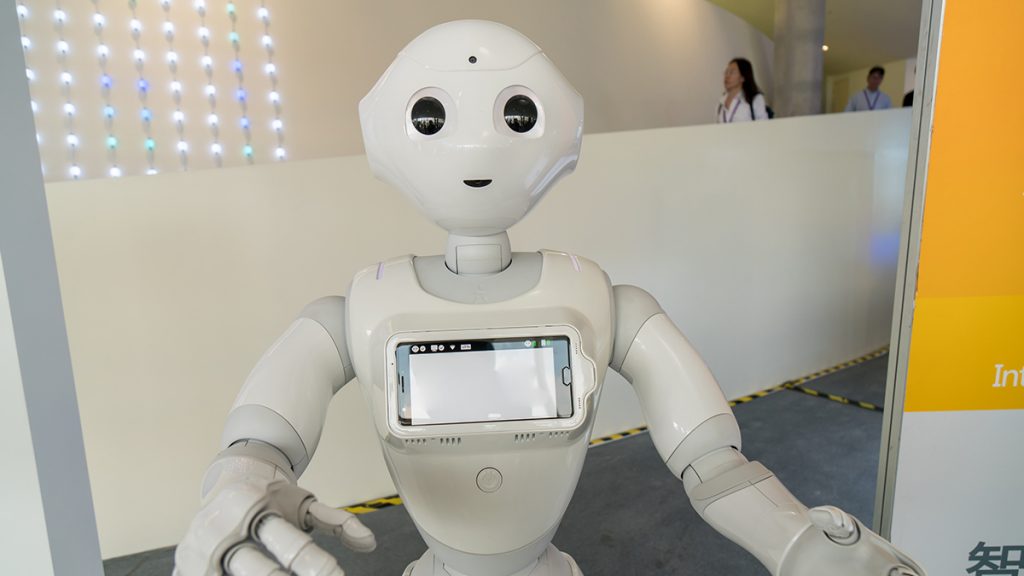

Caring for the health and well-being of our fellow humans has always been viewed as a combination of art and science. With all the recent advances in technology, there is no doubt the health care industry as a whole gets an “A” in science. The tradeoff, however, is that we’ve become so focused on using the technology (as this HBR article points out) that we spend far less time listening to individual human stories. The result: The industry’s letter grade for the art of healing is more like a “C-” or even a “D.” This disparity has contributed to staggering and demoralizing statistics about the absence of empathy and caring for patients, and burnout, fatigue, and depression among clinicians. It’s time for that to change.
Some dysfunction may always exist in our health care systems. But administrative and bureaucratic hassles that keep doctors and nurses away from the bedside can be readily solved. We need to build an intentional, human-centered culture and approach burnout and well-being comprehensively — aligning them with other organizational priorities. We need a metric for humanity to evaluate the human capacity and connection among caregivers and patients. We also need to give patients a voice in how health care is delivered. And we must define new standards for humane technologies and implementation practices — an ecosystem of healing on par with quality, safety, and performance-improvement initiatives.
A mentor told me early in my career that only 20% of healing involves the high-tech stuff. The remaining 80%, he said, is about the relationships we build with patients, the physical environments we create, and the resources we provide that enable patients to tap into whatever they need for spiritual sustenance. The longer I work in health care, the more I realize just how right he was.
How do we get back to the 80-20 rule? By placing the well-being of patients and care teams at the top of the list for every initiative we undertake and every technology we introduce. Rather than just introducing technology with no thought as to its impact on clinicians — as happened with many rollouts of electronic medical records (EMRs) — we need to establish a way to quantifiably measure whether a new technology actually improves a clinician’s workday and ability to deliver care or simply creates hassles and inefficiency. Let’s develop an up-front “technology ROI” that measures workflow impact, inefficiency, hassle and impact on physician and nurse well-being.
The National Taskforce for Humanity in Healthcare, of which I am a founding member, is piloting a system of metrics for well-being developed by J. Bryan Sexton of Duke University Medical Center. Instead of measuring burnout or how broken health care people are, Dr. Sexton’s metrics focus on emotional thriving and emotional resilience. (The former are how strongly people agree or disagree to these statements: “I have a chance to use my strengths every day at work,” “I feel like I am thriving at my job,” “I feel like I am making a meaningful difference at my job,” and “I often have something that I am very looking forward to at my job.” The latter are how strongly people agree or disagree to these statements: “I always bounce back quickly after difficulties,” ”I can adapt to events in my life that I cannot influence,” “My mood reliably recovers after frustrations and setbacks,” and “I can always regain a positive outlook despite what happens.”) This allows leaders to focus on their team members’ well-being and to measure the impact of new processes, technologies, and care models on the well-being of physicians, nurses, and staff.
Measuring staff well-being and clinician resilience before and after a new technology or process improvement is deployed is essential to eradicating burnout. Pre- and post-measurements let hospitals know if they are designing an ideal healing and working environment for patients, families, physicians and other care team members. They also enable them to make changes as-needed before fatigue and frustration are imbedded within a system’s operations and culture.
We must put science behind the human experience of care to accelerate change and truly transform health care. Had we done this before EMR implementations, we would have avoided the burnout of a generation of clinicians. When we do this, clinicians will once again be able to show up for patients the way they want — with passion, energy, enthusiasm, and empathy.
A focus on humanity will also get clinicians talking to each other instead of relying on hastily-typed notes in the EMR that may or may not be read. I had a conversation with a radiologist colleague recently. He described a time when he would routinely sit down with doctors to review specific patient images and discuss the differential diagnosis and treatment recommendations. Today, he rarely meets in person with doctors. Instead, they call or mostly text requests to just receive the written report of the imaging.
The story is a sad reminder that we’re missing the art of medicine that improves our ability to make accurate diagnoses and create the best care plans. A surgeon who stops by recovery and tells the nursing team, “Here’s what I did in the operating room, and here’s what I’m concerned about that I’d like you to watch for during the night” is going to do far more to produce a quality outcome because it allows real-time communication among care team members. And, it ensures that the patient’s story — the best diagnostic tool we have — is not lost in the technology but, rather, stays front and center in the patient’s treatment plan.
Doctors and nurses need to step up and lead this revolution instead of passively accepting technologies. We also need to rethink patient encounters and communication at every level to make the entire health care system — from pre-arrival to discharge to follow-up care — a more consistent human experience. If designed and deployed with input from patients, families and care teams, the right technology can actually help restore the patient narrative.
A good example of a high-tech, high-touch crossroad to healing is the Code Lavender program designed to help resuscitate emotional, physical and spiritual needs of clinicians, families and patients alike. (Disclosure: First launched as Patient Lavender at North Hawaii Community Hospital by Earl Bakken, Code Lavender has evolved and expanded. For the past 15 years, I have introduced and implemented the program in hospitals around the world with the help of colleagues at the Experience Innovation Network, part of Vocera.)
When a clinician (or a patient or family member) reaches an emotional limit, a care team member can call or broadcast on their mobile devices a Code Lavender to a distinct team comprised of wellness, nutrition, pastoral, and palliative experts. Upon receipt of the code, an integrative healing equivalent of a Code Blue, the multi-disciplinary team quickly responds, offering physical, spiritual and emotional support to those in need. After implementing Code Lavender programs, hospitals often experience improvements in staff morale and loyalty. One children’s hospital surveyed staff before and after implementing the program, found that the number of staff members reporting they “do not feel supported” by the institution dropped from 24% to less than 3%.
In another example, Ronald A. Paulus, president and CEO of Mission Health, a large health system based in Asheville, North Carolina, spearheads a program at his hospital called Project ReNew. It focuses on continuous improvement aimed at reducing hassles, improving efficiency and examining how the system operates by involving team members at every level. The goal is to restore a sense of joy to their work. Furthermore, Christine Sinsky, a physician who is vice president of professional satisfaction at the American Medical Association, works with policy-making bodies to reduce administrative burdens and with innovators to provide solutions to burnout through an AMA program called StepsForward.
These examples demonstrate a new breed of leaders among physicians and nurses bringing humanity back to medicine.
The National Taskforce for Humanity in Healthcare is actively working to rebalance our focus on technology and humanity in health care. It has three key areas in which it is taking action:
1. Change the dialog from one that sees burnout as a personal psychological failing to acknowledgement of a system in distress. In medical school and nursing school, clinicians are taught to “tough it out” and not show signs of weakness. Yet, we are all human. We need to acknowledge the stress our system creates and train the skill of well-being while we do the hard work of eliminating the preventable trauma of an unnecessarily complex system.
Discussions of burnout prevention and resolution typically focus on interventions at the individual level. Prevailing wisdom seems to hold that because burnout manifests in the individual, it is the individual’s responsibility to solve, with perhaps some growing acknowledgement that institutional support is necessary. We believe that burnout is the individual manifestation of a system and a cultural issue, which requires intervention at the system, team, and individual levels. Through this reframing, the aim is shifted from burnout prevention to creating a system that supports purpose, well-being and joy.
2. Develop metrics around technology deployments that are noted above.
3. Create a blueprint for change that supports a systematic shift in culture towards a human-centered care system. Change must occur at all levels within organizations and cascade across all decisions related to people, processes, and technology. This would include training patients to lead system design and innovation, rather than being passive participants, as patient-led technology decisions and designs are likely to yield far better decisions than are made today.
Patients must have a voice in the equation since they are ultimately at the center of everything we do. Several hospitals have already embedded patient design fellows as part of the team working to improve patient experience. The more input and leadership we seek from those “consumers” of our services, the more likely we are to bring the humanity, and the art, back to medicine.
Technology, when co-designed for the right reason and used in the right way, has tremendous value in health care. Human-centered technologies simplify processes and allow nurses and doctors to spend more time at the bedside, where they can listen to patient stories, build trusted relationships and deliver personalized care. So, rather than making technology the centerpiece of care, it’s time to start using it to restore human connections and return people to purpose. This crossroad of humanity and technology is where we will find an ideal future of caring.
[“source=pcworld”]




